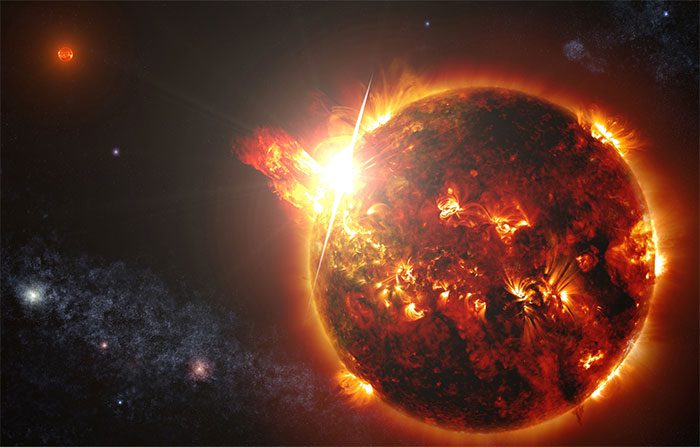A Fireball Created by an X5-Class Solar Flare Sets a New Record for Solar Cycle 25.
According to forecasts from the National Oceanic and Atmospheric Administration (NOAA) in the United States, the fireball will reach Earth on January 2, Eastern Standard Time, which corresponds to noon on January 2 to noon on January 3 Vietnam time.

A fireball erupting from the Sun – (Graphic: BBC).
This cosmic fireball is officially called a “Coronal Mass Ejection” (CME), released from an X5-class solar flare.
The flare erupted at 4:55 AM on January 1, Vietnam time, moving gradually towards Earth.
According to Space.com, this is also the strongest flare recorded during the ongoing Solar Cycle 25, which is expected to peak in 2025 before abruptly transitioning to a quieter phase.
When the solar flare occurs, the CME forms as a bubble in the corona of the parent star, which is the outer atmosphere.
Fortunately for Earth, this fireball is expected to only skim the planet’s magnetic bubble, meaning it will gently touch the outer part of the magnetosphere.
However, it is enough to cause a minor G1-class geomagnetic storm, which may slightly affect communication infrastructure due to temporary disturbances in a part of the magnetosphere.
Meanwhile, some regions at high latitudes on Earth may have a chance to witness beautiful auroras.
The source of the X5 solar flare that created this fireball has been identified as NOAA 3536, a group of sunspots. The NOAA 3636 group also previously produced a very strong solar flare—an X2.8 class—on December 14, 2023.
According to NASA, there are four levels of solar flares, ranked from low to high: B, C, M, and X.
Their intensity increases exponentially similar to the Richter scale for measuring earthquake strength: C-class flares are ten times stronger than B-class flares, M-class flares are one hundred times stronger than B-class flares, and X-class flares are one thousand times stronger than B-class flares.


















































